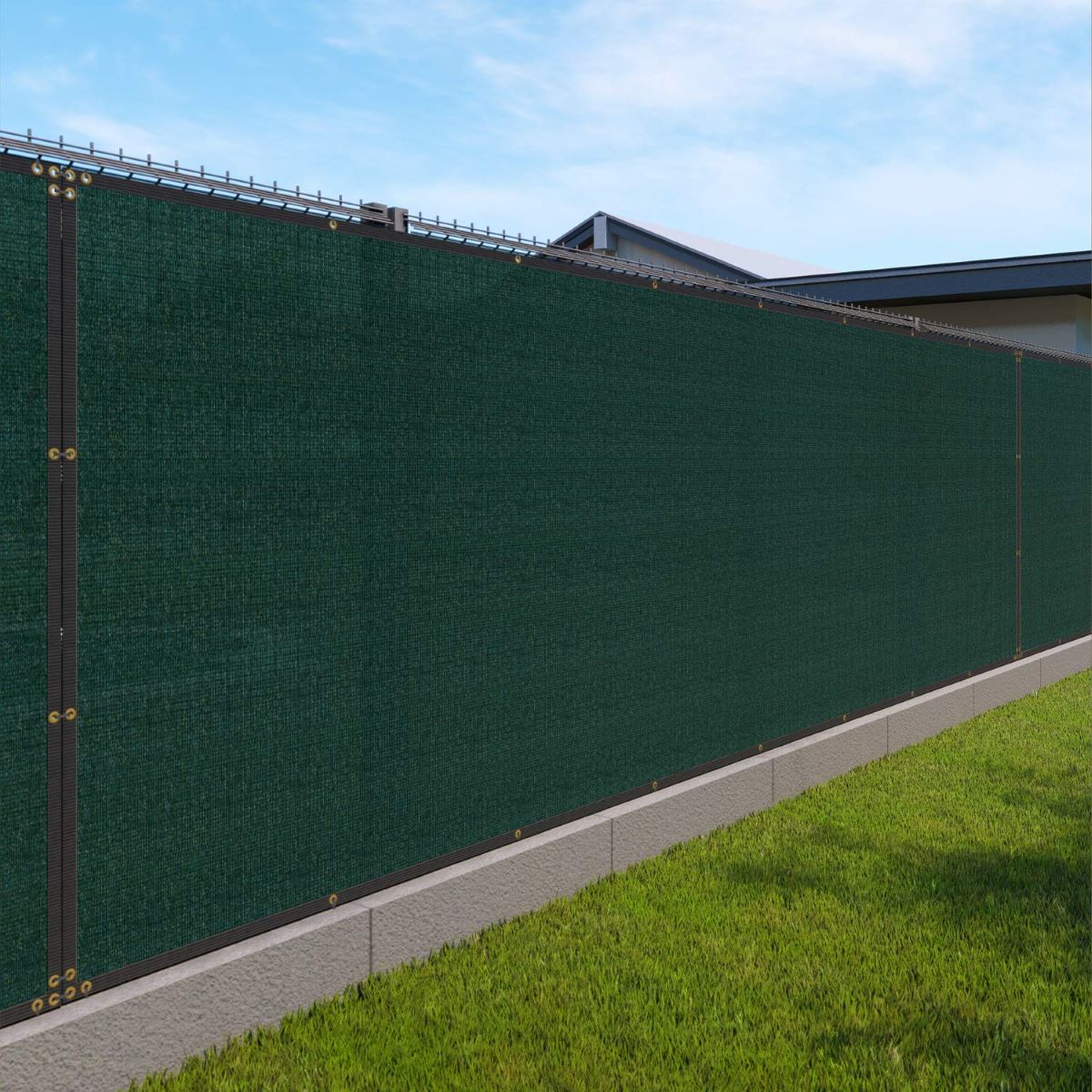

Articles
How To Cover A Fence For Privacy
Modified: October 20, 2024
Discover effective ways to cover your fence for added privacy with informative articles. Get expert advice and DIY tips to create a secluded outdoor space.
(Many of the links in this article redirect to a specific reviewed product. Your purchase of these products through affiliate links helps to generate commission for Storables.com, at no extra cost. Learn more)
Introduction
When it comes to enjoying the outdoor spaces of your home, privacy is often a top priority. Whether you have nosy neighbors, a busy street nearby, or simply want to create a more secluded and intimate atmosphere, covering your fence for privacy is an effective solution.
Having a private outdoor space allows you to relax, entertain, and enjoy the outdoors without feeling exposed or constantly observed. Fortunately, there are several options available to enhance the privacy of your fence, ranging from practical screens to natural and decorative solutions.
In this article, we will explore various methods and materials you can use to cover your fence for privacy, providing you with the information you need to create a more intimate outdoor space that suits your personal style and preferences.
Key Takeaways:
- Create a secluded outdoor oasis by choosing from a variety of materials and techniques to cover your fence for privacy, such as privacy screens, natural fences, trellises, and living walls. Personalize your space to reflect your unique style and preferences.
- Regular maintenance and upkeep are essential to ensure the longevity and effectiveness of your privacy fence. From cleaning and inspecting for damage to preventing overgrowth and protecting against pests and moisture, taking proactive measures will help maintain your privacy fence in optimal condition.
Read more: How To Decorate A Privacy Fence
Choosing the Right Materials
Before you begin covering your fence for privacy, it’s essential to choose the right materials that align with your vision and requirements. Here are a few options to consider:
- Privacy Screens: Privacy screens are a popular choice for creating a barrier and secluding your outdoor space. They come in various materials such as wood, metal, or vinyl and can be easily attached to your existing fence. When selecting a privacy screen, consider the durability, maintenance requirements, and aesthetic appeal of the material.
- Outdoor Curtains or Drapes: Another aesthetically pleasing option is to hang outdoor curtains or drapes alongside your fence. Not only do they provide privacy, but they also add a touch of elegance to your outdoor space. Look for curtains or drapes made from weather-resistant and fade-resistant fabrics to ensure they withstand the elements.
- Bamboo or Reed Fencing: If you prefer a more natural look, consider using bamboo or reed fencing. These materials not only offer privacy but also add a tropical and exotic vibe to your outdoor area. Bamboo and reeds are durable and can withstand various weather conditions, making them an excellent choice for long-lasting privacy.
- Climbing Vines: If you want a more organic and visually appealing privacy solution, consider planting climbing vines along your fence. Vines such as clematis, ivy, or honeysuckle can grow and intertwine with the fence, creating a lush green barrier. Ensure that you choose non-invasive and fast-growing vines for quicker coverage.
- Trellises: Trellises offer both privacy and aesthetics to your outdoor space. They are often made of wood or metal and can be attached to your fence or stand-alone. Trellises provide a framework for climbing plants and can be customized to match your desired level of privacy.
- Living Walls: For a unique and visually stunning privacy solution, consider creating a living wall. Living walls consist of vertical gardens, where plants are grown on a specially designed structure affixed to your fence. This eye-catching feature brings both privacy and a touch of nature to your outdoor area.
When choosing the right materials for your privacy fence, evaluate factors such as durability, maintenance requirements, budget, and aesthetic appeal. Additionally, consider the specific climate and weather conditions in your area to ensure the materials can withstand the elements over time.
Installing a Privacy Screen
One of the most straightforward and effective methods to cover a fence for privacy is by installing a privacy screen. Privacy screens come in a variety of materials and styles, allowing you to choose the option that best suits your needs and complements your outdoor space. Here are the steps to install a privacy screen:
- Measure and Plan: Start by measuring the length and height of your fence to determine how much privacy screen material you will need. Consider the desired level of coverage and mark the areas where you will install the privacy screen.
- Prepare the Fence: Before attaching the privacy screen, make sure your existing fence is clean and free from any debris. If necessary, repair or replace any damaged parts of the fence to ensure a sturdy foundation.
- Position the Privacy Screen: Unroll or position the privacy screen material along the designated areas of the fence. Make sure it aligns with your measured and marked dimensions, ensuring proper coverage.
- Secure the Privacy Screen: Using fasteners appropriate for the material of your privacy screen, such as zip ties or screws, attach the screen to the fence. Ensure that it is tightly secured and evenly distributed along the fence to prevent sagging or gaps.
- Trim Excess: Trim any excess screen material at the top or bottom to achieve a neat and clean look. Use sharp scissors or a utility knife for precise cuts.
- Finishing Touches: Once the privacy screen is securely installed, step back and assess the overall appearance. Make any necessary adjustments or additions, such as decorative elements or trim, to enhance the aesthetic appeal of the screen and integrate it seamlessly with your outdoor space.
Remember to refer to the manufacturer’s instructions for specific guidelines and recommendations when installing a privacy screen. It is also essential to periodically inspect and maintain the screen to ensure its longevity and effectiveness as a privacy solution.
Installing a privacy screen is a relatively simple and cost-effective way to enhance the privacy of your fence and create a secluded outdoor space. It provides immediate results and allows you to customize the level of privacy and style to meet your specific needs and preferences.
Growing a Natural Fence
For those who prefer a more organic and eco-friendly approach to covering a fence for privacy, growing a natural fence is an excellent option. By using plants and greenery, you can create a lush and visually appealing barrier that offers privacy and enhances the beauty of your outdoor space. Here are some steps to grow a natural fence:
- Choose the Right Plants: Select plants that are suitable for your climate and the specific conditions of your outdoor area. Consider factors such as sunlight requirements, soil type, and maintenance needs. Opt for fast-growing and dense plants that provide optimal privacy coverage.
- Prepare the Soil: Ensure that the soil along your fence line is fertile and well-draining. Remove any weeds or unwanted vegetation and amend the soil with organic matter to provide a healthy growing environment for your plants.
- Plant Your Selection: Dig holes along the fence line, spacing them according to the recommended planting distance for your chosen plants. Place the plants in the holes and backfill with soil, gently firming it down around the roots. Water thoroughly after planting to help settle the soil.
- Provide Support: If your chosen plants require support to grow vertically, install trellises or stakes along the fence line. Secure the plants to the support structure using clips or ties, allowing them to climb and cover the fence surface.
- Water and Care: Proper watering and regular care are essential for the healthy growth of your natural fence. Follow watering guidelines specific to the plants you have chosen, and regularly inspect for signs of pests or diseases. Prune or trim the plants as needed to maintain their shape and density.
- Monitor Growth: Keep an eye on the growth of your natural fence and adjust as necessary. Some plants may require periodic trimming or training to prevent them from encroaching on neighboring spaces or structures.
- Reap the Benefits: As your plants grow and fill in the fence, you will enjoy a natural and visually attractive barrier that offers privacy, sound insulation, and increased biodiversity in your outdoor space. Additionally, you will benefit from improved air quality and a sense of tranquility and connection with nature.
It’s important to research the specific plants you choose for your natural fence to ensure they are well-suited to your location and requirements. Consider factors such as growth rate, size at maturity, and compatibility with neighboring plants to achieve the desired results.
Growing a natural fence takes time and patience, but the end result is a beautiful and sustainable privacy solution that harmonizes with the environment and brings a sense of serenity and tranquility to your outdoor space.
Using Outdoor Curtains or Drapes
Outdoor curtains or drapes are a stylish and versatile option for adding privacy to your outdoor space. They not only create a sense of seclusion but also add an element of elegance and sophistication to your fence. Here’s how you can effectively use outdoor curtains or drapes to cover your fence for privacy:
- Selecting the Right Material: Choose outdoor curtains or drapes made from weather-resistant and fade-resistant fabrics. Look for materials such as polyester or acrylic that can withstand exposure to sunlight, moisture, and other outdoor elements.
- Measuring and Planning: Measure the length and height of your fence to determine the appropriate size of the curtains or drapes. Consider whether you want them to hang flush with the top of the fence or extend below for added coverage and style. Allow for extra length if you plan to tie them back or create draping effects.
- Installing Curtain Rods or Hooks: Install sturdy and weather-resistant curtain rods or hooks on your fence at the desired height. Make sure they are securely attached and can support the weight of the curtains or drapes. If necessary, use additional supports or brackets for added stability.
- Hanging the Curtains or Drapes: Slide the curtains or drapes onto the curtain rods or hooks, ensuring they are evenly spaced and hanging straight. Adjust the length as needed and ensure they touch the ground or fall slightly below to provide maximum privacy.
- Securing the Curtains or Drapes: To ensure the curtains or drapes stay in place, consider using curtain tiebacks or clips to secure them to the fence. This will prevent them from blowing in the wind or obstructing your view when you want to have an open feel to your outdoor space.
- Adding Decorative Touches: Outdoor curtains or drapes offer an opportunity to enhance the aesthetic appeal of your outdoor space. Consider incorporating decorative elements such as curtain rings, decorative tiebacks, or hanging ornaments that complement your overall outdoor decor.
- Maintenance and Care: Regularly clean and maintain your outdoor curtains or drapes to keep them in good condition. Follow the manufacturer’s instructions for cleaning and storage, especially during inclement weather or when not in use for an extended period.
Outdoor curtains or drapes provide a versatile and visually appealing way to cover your fence for privacy. They allow you to easily adjust the level of privacy and sunlight exposure, creating a cozy and intimate outdoor space that reflects your personal style.
With a wide range of colors, patterns, and styles available, outdoor curtains or drapes offer endless possibilities to enhance your outdoor decor while providing the desired level of privacy and protection. Let your creativity shine as you transform your fence into a beautiful and secluded oasis.
Read more: How To Install Privacy Fence
Installing Bamboo or Reed Fencing
If you’re looking for a natural and eco-friendly way to cover your fence for privacy, bamboo or reed fencing is an excellent option. These materials not only provide privacy but also add a touch of tropical charm to your outdoor space. Here’s a step-by-step guide on installing bamboo or reed fencing:
- Measure and Prepare: Measure the length of your fence to determine the amount of bamboo or reed fencing you’ll need. Before installation, ensure that your existing fence is sturdy and free from any damage. Remove any debris or obstructions along the fence line.
- Pre-treat the Fence: To ensure the longevity of your bamboo or reed fencing, consider applying a wood preservative or sealant to the surface of your existing fence. This step helps protect against moisture, insects, and rot.
- Attach the Fencing: Begin by unrolling the bamboo or reed fencing along the fence line. Use zip ties or galvanized wire to secure the fencing to your existing fence, starting at the top and working your way down. Leave some space between the ground and the bottom of the fencing to prevent direct contact with moisture.
- Ensure Stability: To provide additional stability, use wooden stakes every few feet along the fence line. Drive them into the ground and attach them to the bamboo or reed fencing with wire or zip ties. This will prevent any sagging or swaying of the fencing.
- Trim Excess Material: Once the fencing is in place and secure, trim any excess material at the top or bottom to ensure a neat and even appearance. Use sharp pruning shears or a saw, depending on the thickness of the material.
- Maintenance and Care: To maintain the quality and appearance of your bamboo or reed fencing, regular maintenance is essential. Periodically inspect the fencing for any signs of damage or wear. Apply a coat of sealant or wood preservative to protect it from the elements and extend its lifespan.
Installing bamboo or reed fencing not only provides you with privacy but also creates a serene and tropical atmosphere in your outdoor space. The natural textures and colors of bamboo or reed fencing add a unique touch to your fence while blending seamlessly with surrounding foliage.
It’s important to note that bamboo or reed fencing requires regular maintenance to keep it in optimal condition. Over time, the fencing may weather and change color due to exposure to sunlight and moisture. However, with proper care, your bamboo or reed fencing can maintain its beauty and functionality for many years to come.
Consider incorporating bamboo or reed fencing into your outdoor design to create a tranquil and private retreat that transports you to a tropical paradise right in your own backyard.
Consider using natural materials like bamboo or reed fencing to cover your fence for privacy. These materials provide a natural and aesthetically pleasing barrier while also being durable and easy to install.
Planting Climbing Vines
If you’re looking for a natural and visually appealing way to cover your fence for privacy, planting climbing vines is a wonderful option. Climbing vines not only provide a green barrier but also bring beauty and serenity to your outdoor space. Here’s how you can plant climbing vines to create a lush and private fence:
- Choose the Right Vines: Select climbing vines that suit your climate and growing conditions. Consider factors such as the amount of sunlight, soil type, and available space. Some popular climbing vines for privacy include clematis, ivy, honeysuckle, and jasmine.
- Prepare the Soil: Ensure the soil along your fence line is well-draining and fertile. Remove any weeds or grass from the area and amend the soil with organic matter to improve its quality. This will provide a healthy growing environment for your vines.
- Planting the Vines: Dig holes along the fence line, spacing them according to the recommended distance for the specific vine you are planting. Place each vine in its respective hole, gently spreading out the roots. Backfill the hole with soil and press it down firmly around the base of the plant.
- Provide Support: Install a trellis, arbor, or other support structure along your fence to give the vines something to climb. Make sure the support is securely anchored and can withstand the weight and growth of the vines. Train the vines to grow towards the support by gently tying them with soft plant ties or twine.
- Water and Mulch: After planting, thoroughly water the vines to settle the soil and encourage root growth. Mulch the base of each vine to help retain moisture and suppress weed growth. Maintain regular watering, especially during dry periods, to ensure proper growth and establishment.
- Pruning and Maintenance: As the vines grow, they may require occasional pruning to keep them in check and maintain the desired shape and size. Prune any dead or overgrown branches to encourage healthy growth and air circulation. Regularly check for pests or diseases and take appropriate measures to protect your vines.
- Enjoy the Privacy: With time, the climbing vines will cover your fence, providing a luscious green privacy screen. Not only will you enjoy increased privacy, but you will also relish the beauty of the blooming flowers and foliage that the vines bring.
Planting climbing vines along your fence not only offers privacy but also adds a touch of natural beauty and charm to your outdoor space. The intertwining vines create a serene atmosphere and help soften the appearance of the fence, integrating it harmoniously with the surrounding landscape.
Remember to consider the specific needs and growth habits of the climbing vines you choose. Some vines may require more maintenance or pruning, while others may grow more rapidly and require regular training and support.
Transform your fence into a living, green wall by planting climbing vines and savor the privacy and tranquility they bring to your outdoor sanctuary.
Enhancing Privacy with Trellises
If you’re looking for a versatile and customizable way to cover your fence for privacy, using trellises is an excellent option. Trellises not only provide a structural framework but also offer an opportunity to incorporate various plants or materials for added privacy and aesthetic appeal. Here’s how you can enhance privacy with trellises:
- Choose the Right Trellis: Select a trellis that suits your style and complements your outdoor space. Trellises come in various materials such as wood, metal, or vinyl, each with its own unique look and durability. Consider the size, design, and strength of the trellis in relation to your fence and the plants you plan to grow.
- Positioning Trellises: Determine where you want to place the trellises on your fence. Consider the desired level of privacy and the natural sunlight patterns in your outdoor area. Place the trellises strategically to block unwanted views and create secluded spaces.
- Attaching the Trellises: Secure the trellises to your existing fence using screws or brackets, ensuring they are firmly attached. Make sure the trellises are properly aligned and level to create a cohesive and visually pleasing look.
- Choosing Climbing Plants: Select climbing plants that suit your climate, sunlight conditions, and personal preferences. Popular options include roses, clematis, wisteria, or climbing hydrangeas. Choose fast-growing varieties for quicker coverage and increased privacy.
- Planting and Training: Dig holes at the base of the trellises and plant the climbing plants, ensuring they have sufficient space to grow. As the plants begin to grow, gently train them to climb the trellises by guiding the stems and securing them with soft plant ties or twine. Prune and trim the plants as needed to maintain their shape and promote healthy growth.
- Alternative Privacy Options: If you prefer not to use plants on your trellises, you can also enhance privacy by attaching other materials such as outdoor fabric, bamboo screening, or artificial greenery. These options offer a more immediate privacy solution without the need for ongoing maintenance.
- Regular Maintenance: Regularly inspect the trellises and plants for any signs of damage or diseases. Prune or trim the plants as necessary to maintain their appearance and encourage healthy growth. Ensure the trellises remain strong and secure by periodically checking the attachments and making any necessary repairs.
Trellises offer a versatile and visually appealing way to enhance privacy along your fence while adding architectural interest to your outdoor space. By incorporating climbing plants or alternative privacy materials, you can create a customized and secluded area that reflects your style and preferences.
Remember to choose plants and materials appropriate for your climate and maintenance capacity. Consider the growth rate and spread of the climbing plants to ensure they won’t overpower the trellises or neighboring areas.
With trellises, you can transform your fence into a private oasis and enjoy the beauty and seclusion they provide. Let your creativity flourish and experiment with different plants and designs to achieve the perfect blend of privacy and aesthetics in your outdoor sanctuary.
Creating a Living Wall
If you’re seeking a unique and eye-catching way to cover your fence for privacy, creating a living wall is an excellent choice. A living wall, also known as a vertical garden, is a stunning display of plants grown on a specially designed structure affixed to your fence. It not only enhances privacy but also adds a touch of greenery and natural beauty to your outdoor space. Here’s how you can create a living wall:
- Choose the Right Structure: Select a structure that suits your space and complements your fence. Living walls can be created using various materials such as wooden pallets, wire mesh, or specially designed living wall systems. Consider the durability, size, and weight-bearing capacity of the structure.
- Prepare the Structure: If using a wooden pallet or wire mesh, ensure it is secure and properly reinforced. For living wall systems, follow the manufacturer’s instructions for installation and preparation. Make sure the structure is firmly attached to your fence or a stable surface.
- Choose the Plants: Select plants that are suitable for vertical growth and can thrive in your climate and outdoor conditions. Opt for a mix of foliage plants, flowering plants, and cascading plants to add texture and visual interest to your living wall. Consider factors such as sunlight requirements, water needs, and maintenance levels.
- Planting the Wall: Begin by preparing the plants for planting. Create pockets or openings in the structure, ensuring there is enough space for the roots to grow. Insert the plants into the pockets, securing them with additional soil or the structure itself. Start from the bottom and work your way up, layering the plants for a lush and full appearance.
- Water and Nutrients: Proper watering is crucial for the health and growth of your living wall. Install a drip irrigation system or use a watering wand to irrigate the plants evenly. Ensure that the plants receive enough moisture without becoming waterlogged. Consider using a balanced liquid fertilizer to provide essential nutrients regularly.
- Maintenance and Care: Regularly inspect your living wall for any signs of pests, diseases, or nutrient deficiencies. Prune or trim the plants as necessary to maintain their shape and encourage healthy growth. Monitor the irrigation system to ensure it’s functioning properly and adjust watering levels based on the needs of the plants.
- Enjoy the Living Wall: As your living wall grows and matures, you’ll be rewarded with a stunning display of lush greenery and vibrant colors. The living wall will not only provide privacy but also improve air quality, reduce noise, and create a tranquil and welcoming ambiance in your outdoor space.
Creating a living wall is an innovative and beautiful way to transform your fence into a living work of art. With careful plant selection and regular maintenance, you can enjoy a thriving and captivating living wall that enhances privacy and becomes a focal point in your outdoor sanctuary.
Remember to consider the unique needs of the plants you choose, such as sunlight, water, and fertilization requirements. Regularly monitor and care for your living wall to ensure its long-term health and vibrancy.
Unleash your creativity, experiment with different plant varieties, and let your living wall be a testament to the beauty of nature in your outdoor space.
Read more: What To Put On Fence For Privacy
Maintaining and Upkeeping Your Privacy Fence
Once you have covered your fence for privacy, it’s important to properly maintain and upkeep it to ensure its longevity and effectiveness. Regular maintenance will help keep your privacy fence in optimal condition and continue to provide the privacy you desire. Here are some essential maintenance tasks to consider:
- Clean Regularly: Clean your privacy fence on a regular basis to remove dirt, debris, and organic matter that may accumulate over time. Use a mild detergent or fence cleaner and a soft brush or cloth to gently scrub the surface. Rinse with water to remove any residue and allow it to air dry.
- Inspect for Damage: Periodically inspect your privacy fence for any signs of damage, such as loose boards, broken panels, or rot. Repair or replace any damaged parts promptly to maintain the structural integrity and privacy of your fence.
- Paint or Stain: If your privacy fence is made of wood, consider painting or staining it to protect it from the elements and enhance its appearance. Choose a paint or stain specifically formulated for outdoor use and follow the manufacturer’s instructions for application.
- Prevent Plant Overgrowth: If you have planted climbing vines or other plants near your fence, regularly trim and maintain their growth to prevent them from overwhelming or damaging the fence. Prune any branches or stems that may come in contact with the fence or obstruct its effectiveness as a privacy barrier.
- Check for Pest Infestation: Inspect your privacy fence for any signs of pest infestation, such as termites or carpenter ants. If you notice any pest activity, take appropriate measures to eliminate them and prevent further damage to your fence.
- Secure the Connections: Over time, the connections and fasteners of your privacy fence may become loose or weaken. Regularly check and tighten any screws, nails, or brackets to ensure the fence remains secure and stable.
- Protect Against Moisture: Moisture can be damaging to your privacy fence, especially if it is made of wood. Apply a waterproof sealant or paint to protect the wood from moisture absorption and rot. Ensure proper drainage around the base of the fence to prevent water pooling or soil erosion.
- Regularly Trim Vegetation: Trim any vegetation that grows near or against your privacy fence. Overgrown plants can put pressure on the fence and cause damage. Maintaining a clearance between the fence and surrounding vegetation will ensure proper airflow and prevent potential issues.
- Reapply Treatment: If you have used treatments such as sealants, paints, or stains on your privacy fence, periodically reapply them as recommended by the manufacturer. This will help maintain the protective barrier and extend the lifespan of your fence.
By following these maintenance tips, you can ensure that your privacy fence remains in excellent condition and continues to provide the privacy and security you desire. Regular maintenance not only extends the life of your fence but also enhances the beauty and functionality of your outdoor space.
Take the time to inspect your privacy fence regularly and address any maintenance needs promptly. By investing a little effort into proper care and upkeep, you can enjoy the benefits of a well-maintained privacy fence for years to come.
Conclusion
Covering your fence for privacy is a practical and creative way to enhance your outdoor space and create a secluded oasis where you can relax and enjoy your surroundings. Whether you choose privacy screens, outdoor curtains, natural fences, trellises, or living walls, there are various options to suit your style and preferences.
By choosing the right materials and implementing the appropriate techniques, you can transform your plain fence into a beautiful and private barrier. Consider factors such as durability, maintenance requirements, climate suitability, and aesthetic appeal when making your choices. Striking a balance between functionality and aesthetics will result in a privacy solution that enhances both the practicality and visual appeal of your outdoor area.
Regular maintenance and upkeep are crucial to ensure the longevity and effectiveness of your privacy fence. Cleaning, inspecting for damage, and addressing any necessary repairs are essential tasks to undertake. Additionally, taking proactive measures such as painting or staining, preventing overgrowth, protecting against pests and moisture, and securing connections will help maintain your privacy fence in optimal condition.
Creating a private and inviting outdoor space not only provides you with a sanctuary to unwind but also enhances the overall enjoyment and value of your property. Combining elements of privacy and natural beauty creates a harmonious and serene environment where you can connect with nature and find inner peace.
Remember, there is no one-size-fits-all solution when it comes to covering your fence for privacy. Explore different options, experiment with materials and plant choices, and let your creativity guide you. By personalizing your privacy fence, you can create a truly unique and inviting outdoor space that reflects your style and brings joy to your everyday life.
So, go ahead and unleash your creativity while maintaining privacy and tranquility in your outdoor sanctuary. With the right approach and a touch of inspiration, you can achieve the perfect blend of privacy, aesthetics, and functionality for your fence.
Frequently Asked Questions about How To Cover A Fence For Privacy
Was this page helpful?
At Storables.com, we guarantee accurate and reliable information. Our content, validated by Expert Board Contributors, is crafted following stringent Editorial Policies. We're committed to providing you with well-researched, expert-backed insights for all your informational needs.
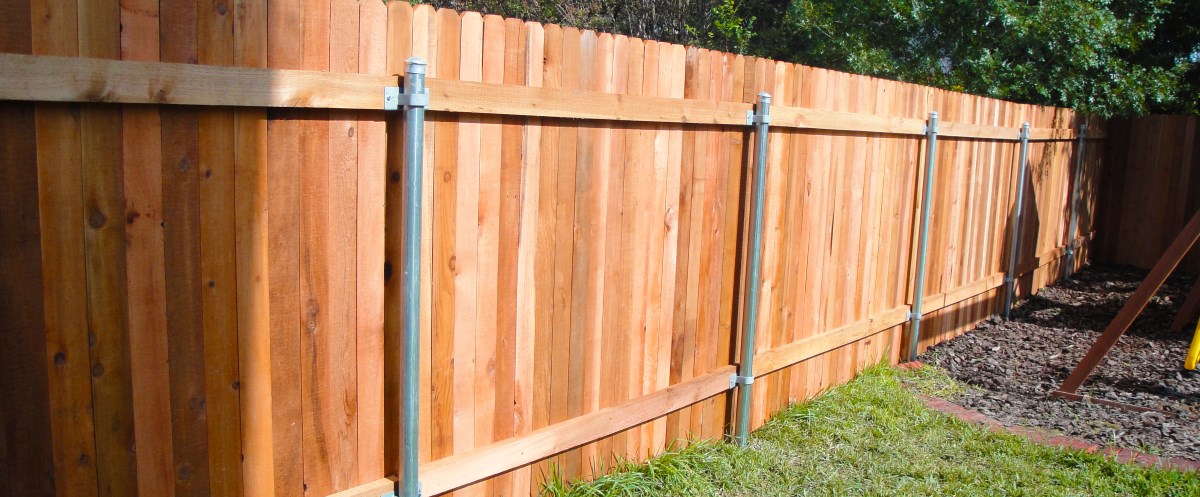
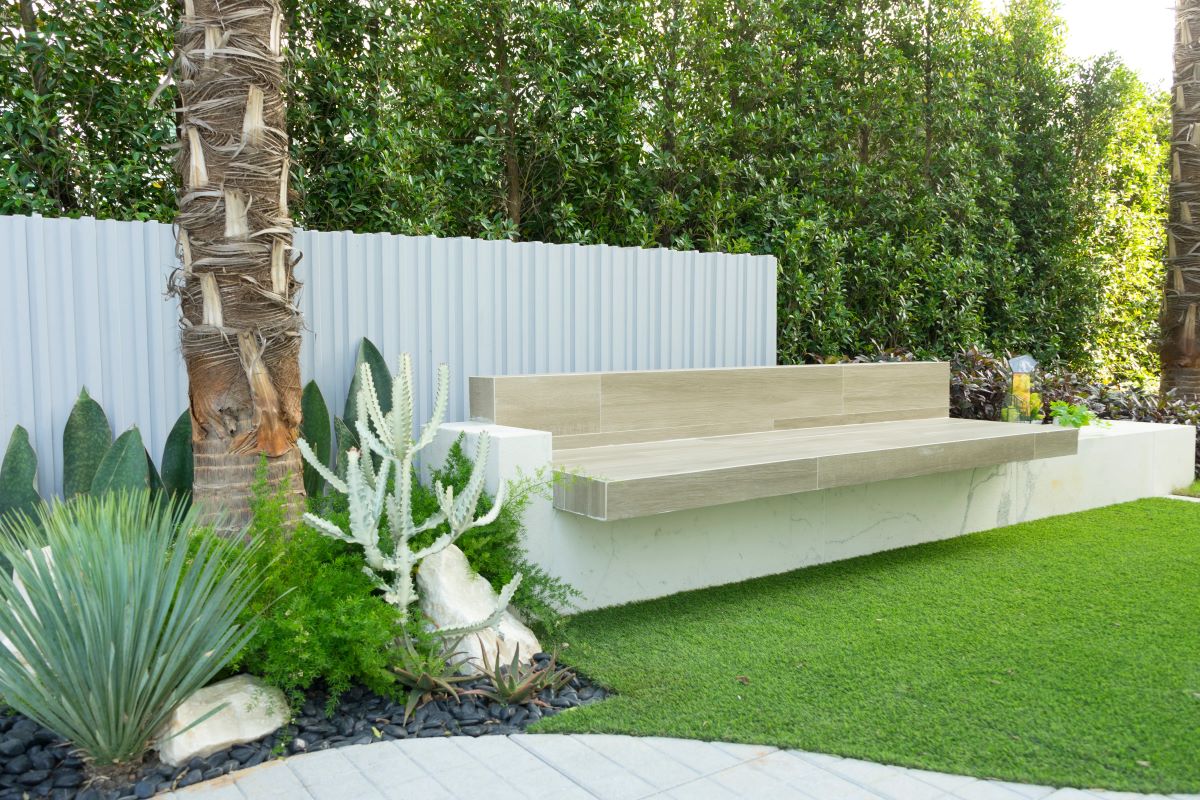
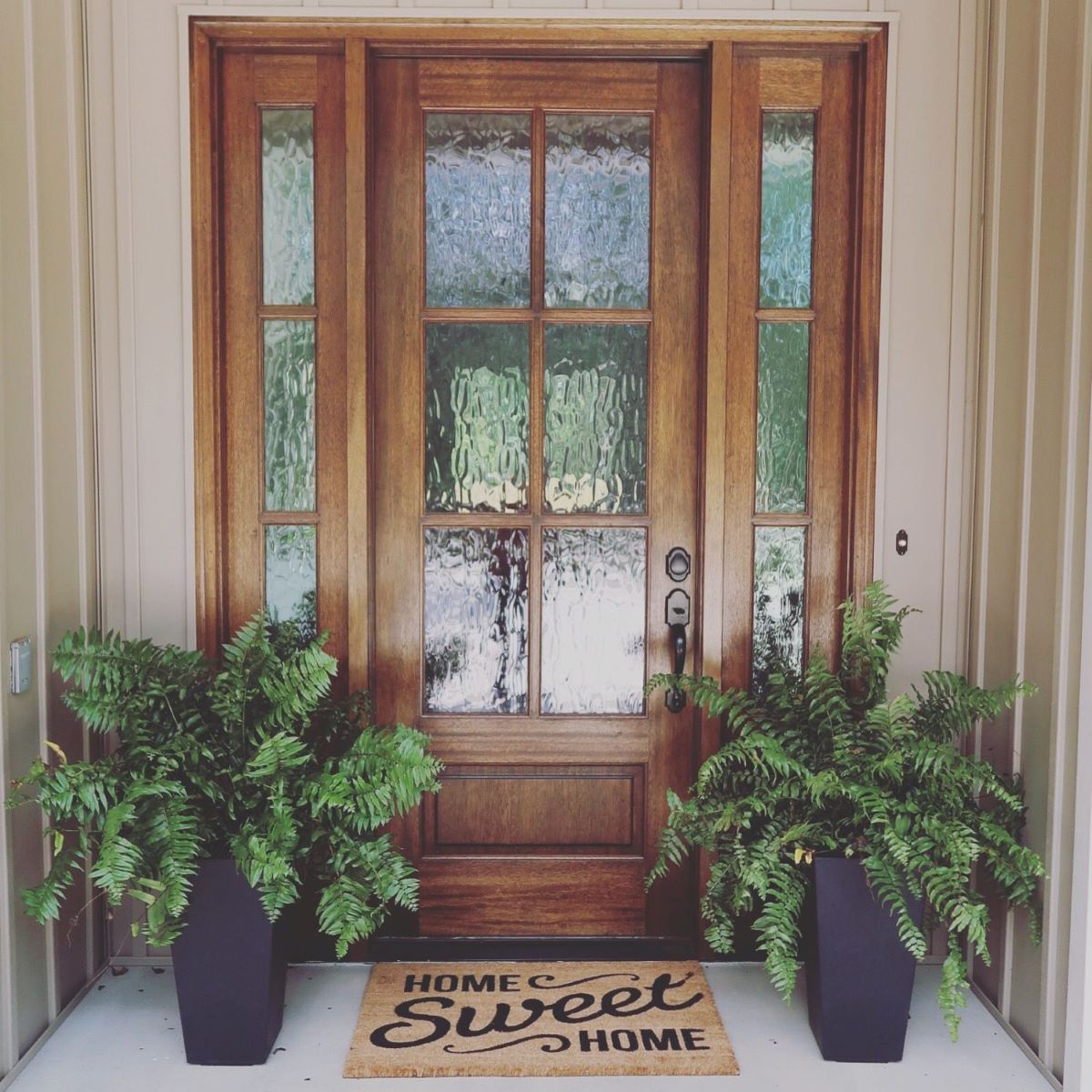
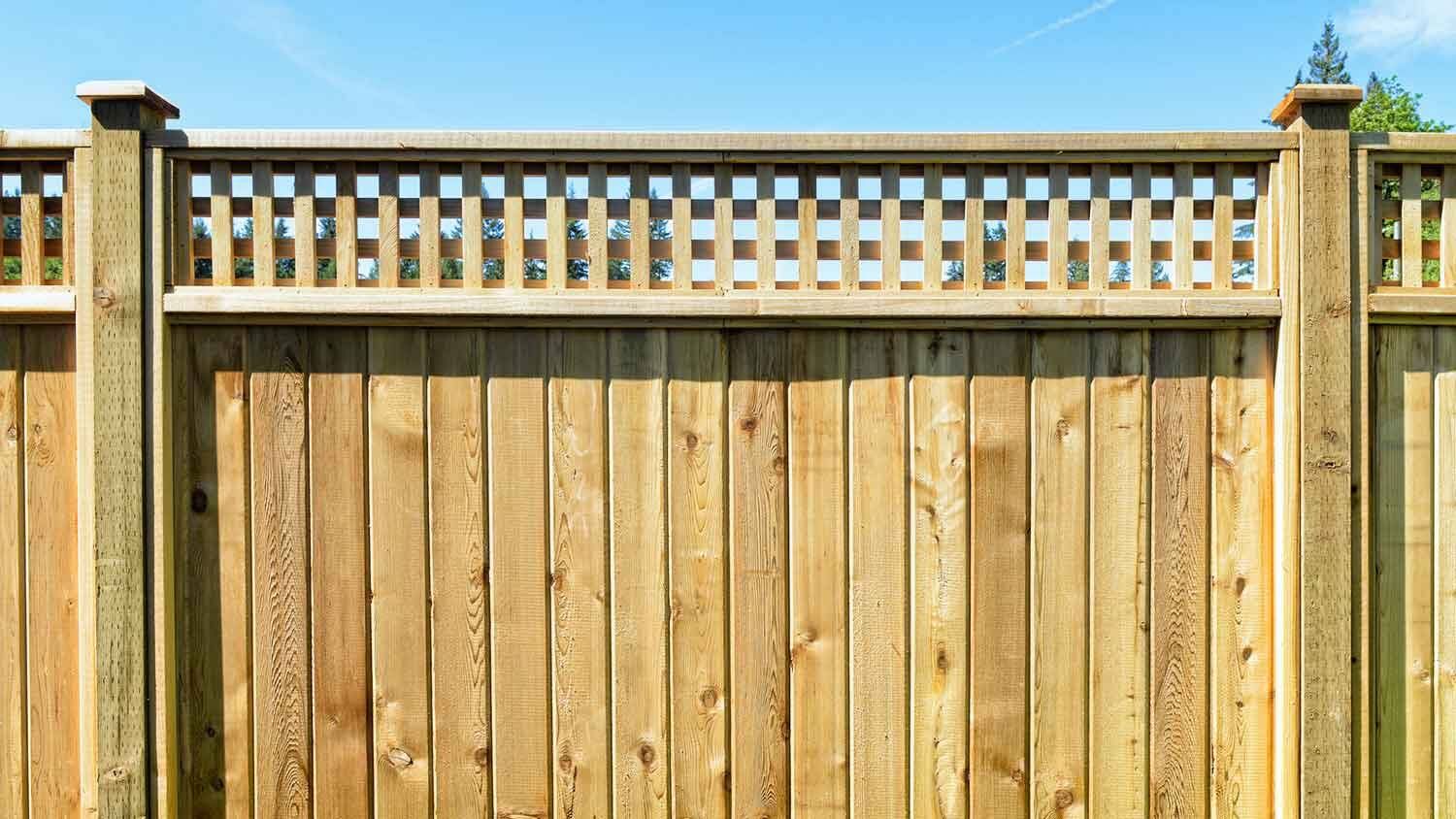
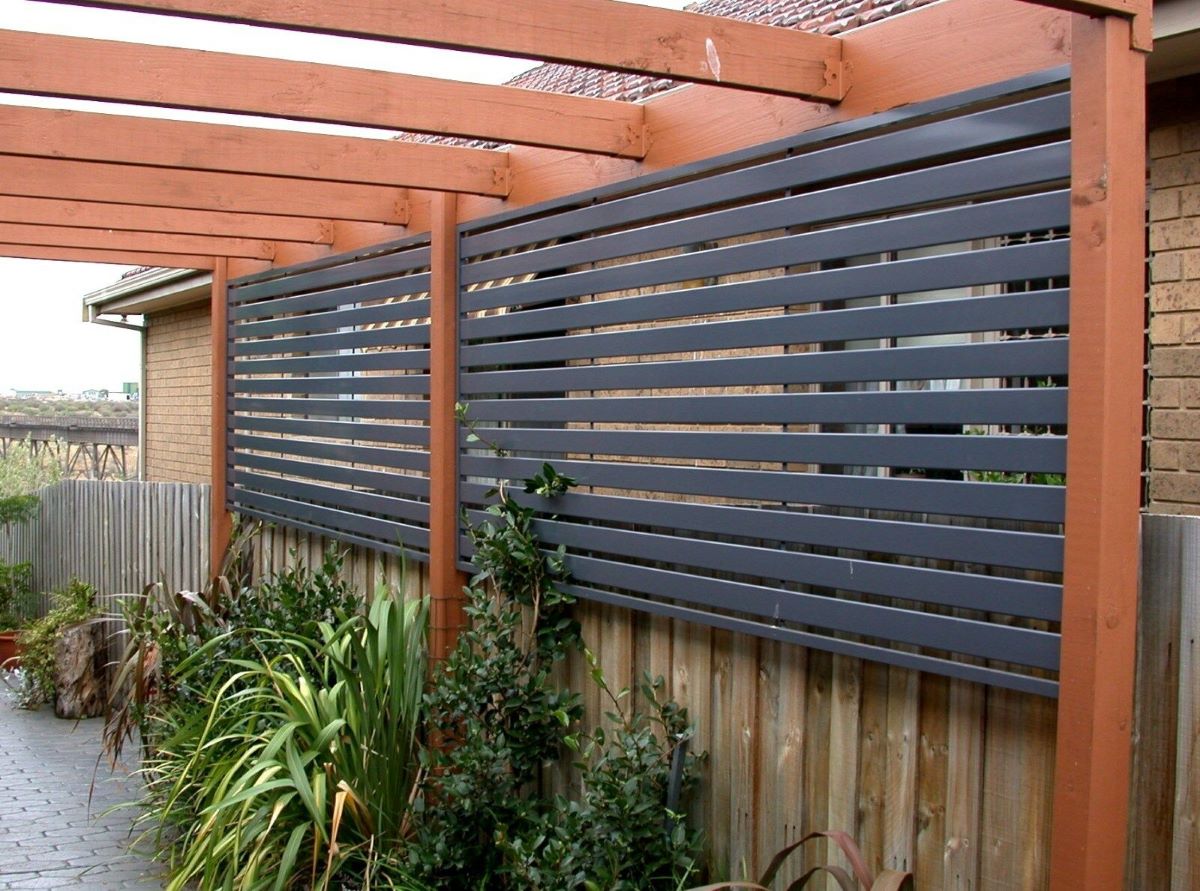
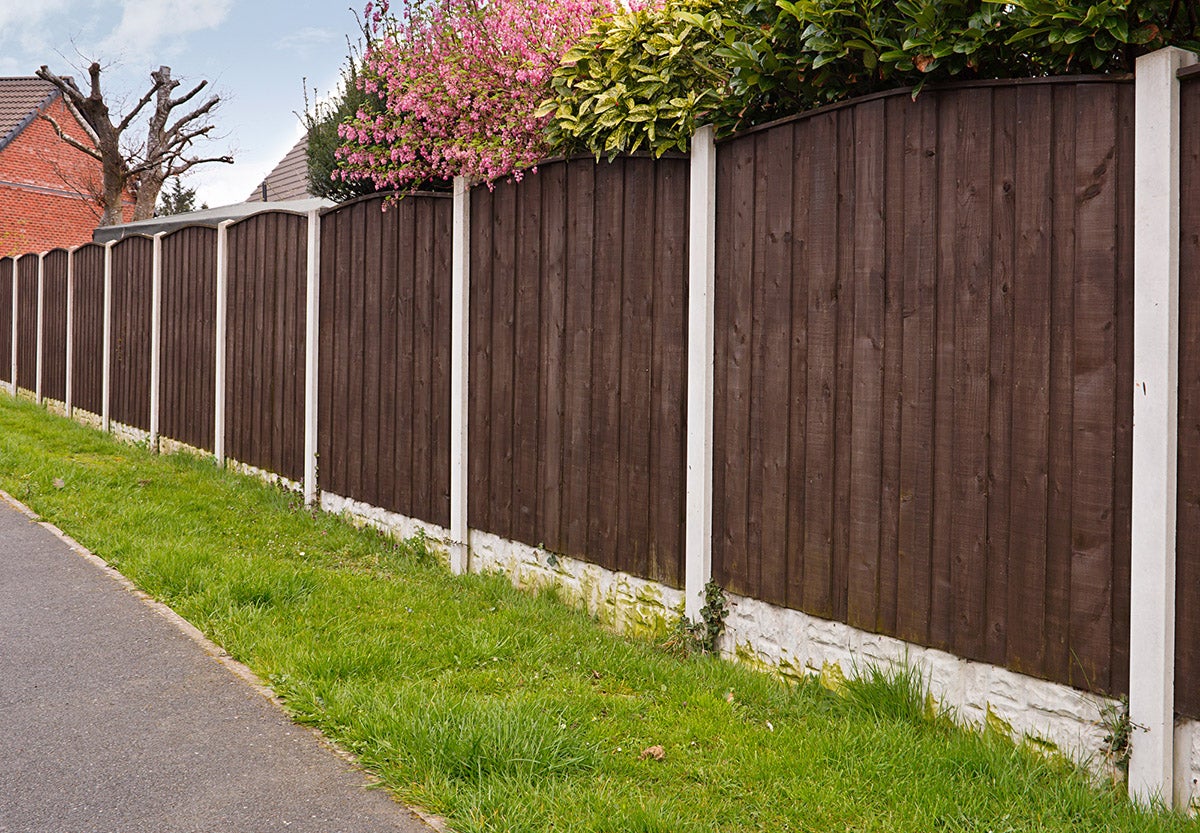

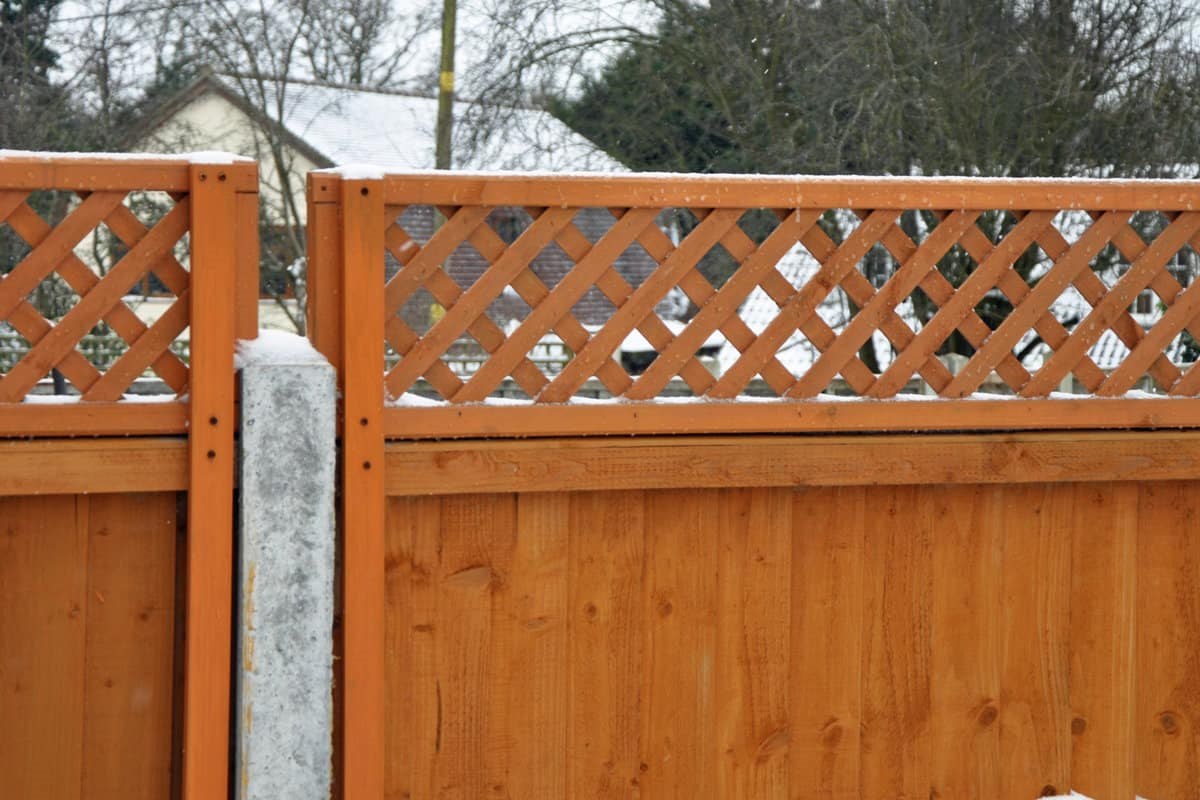
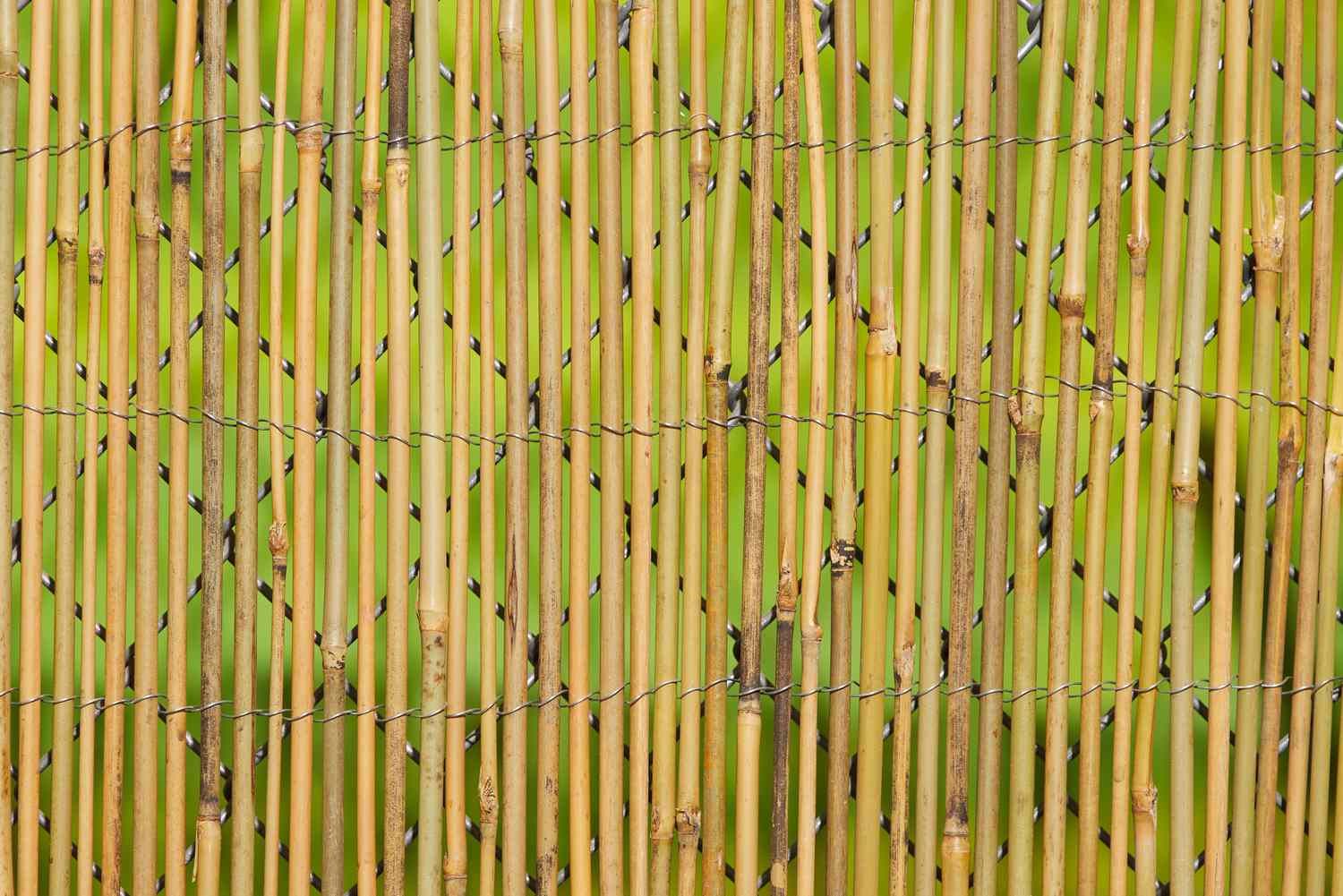

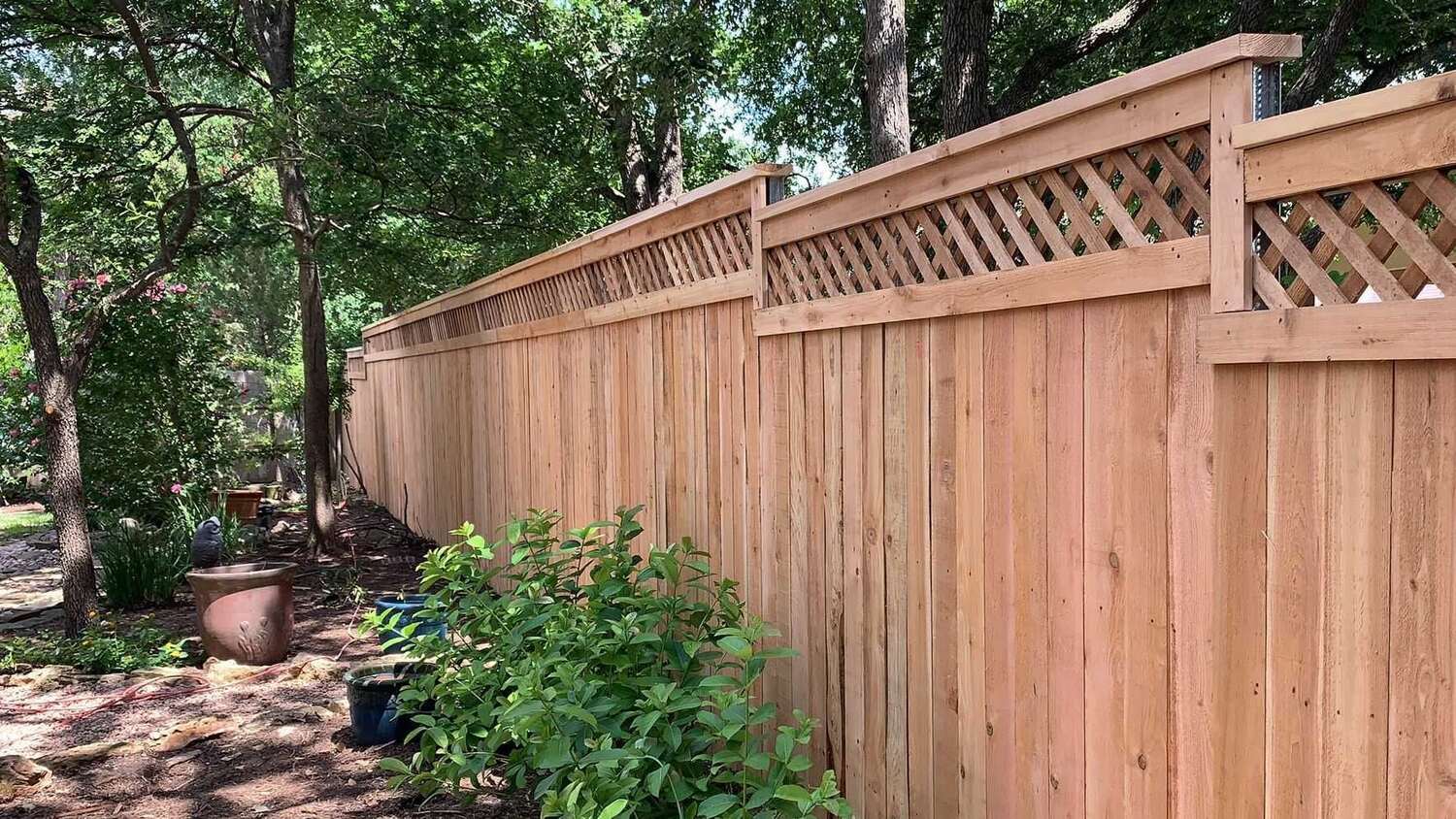
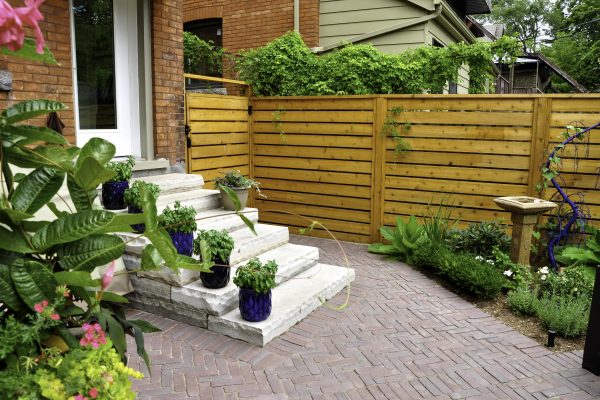


0 thoughts on “How To Cover A Fence For Privacy”